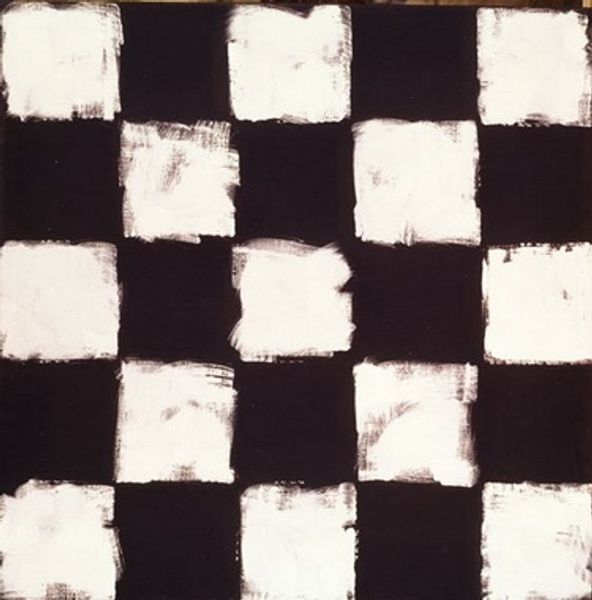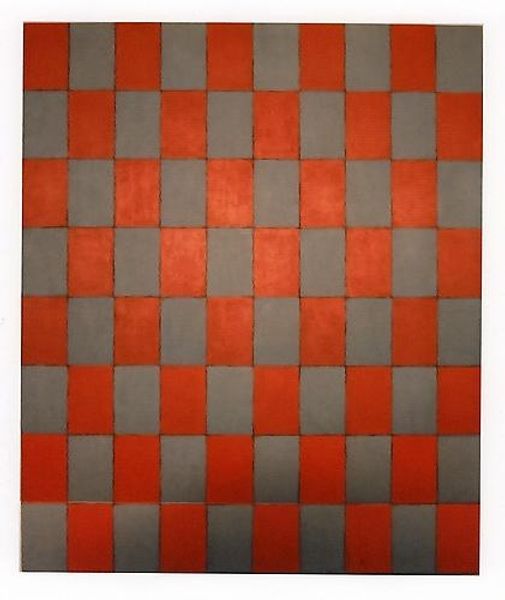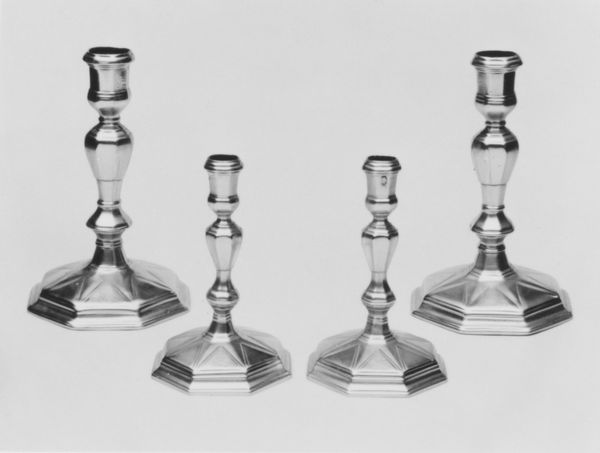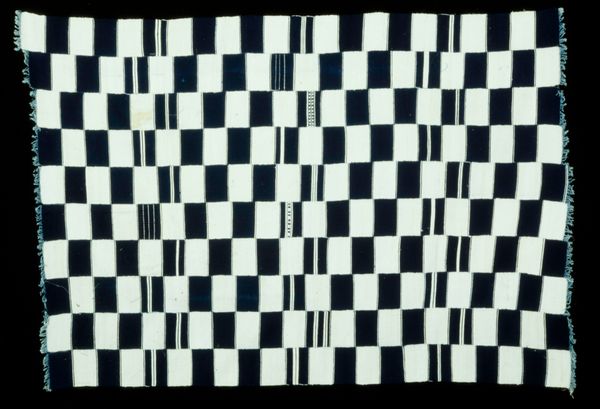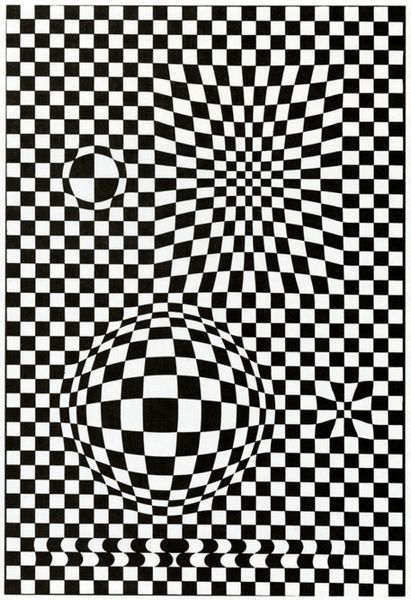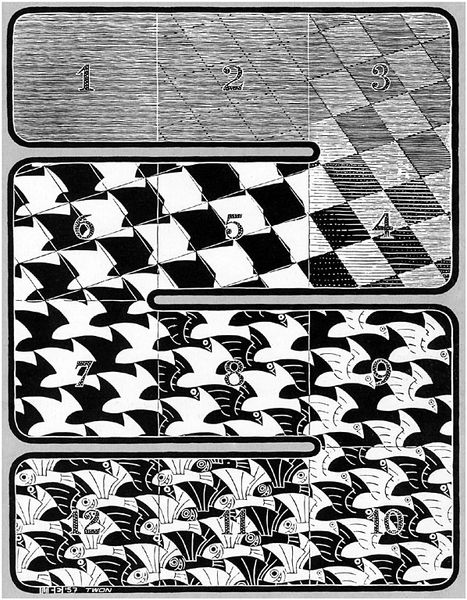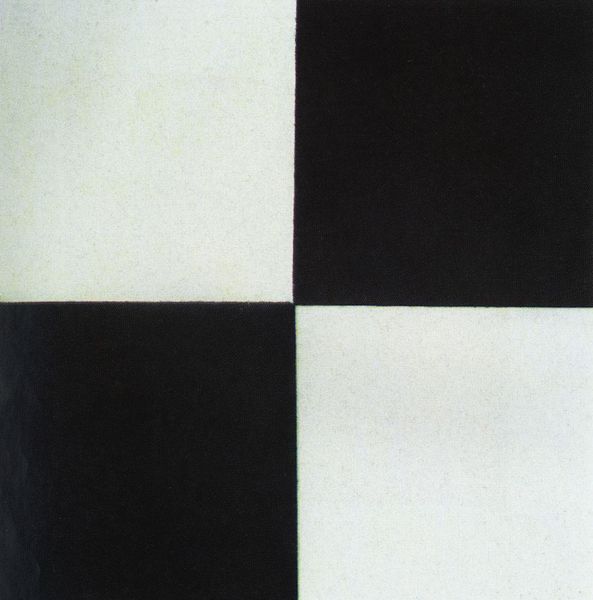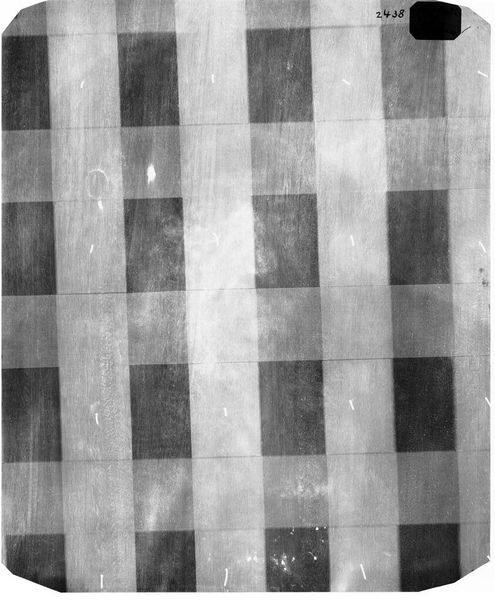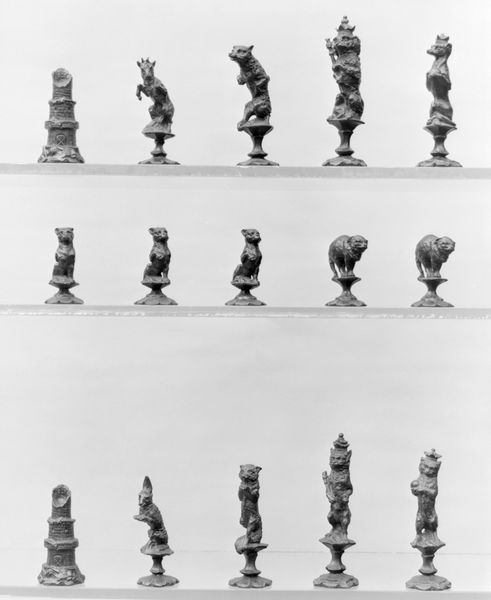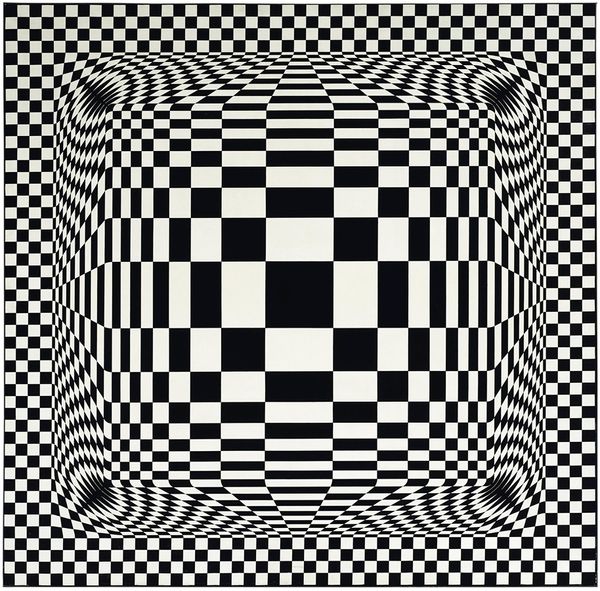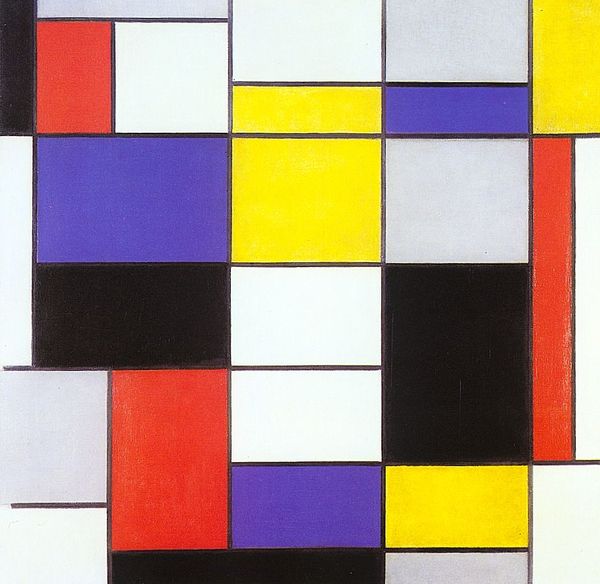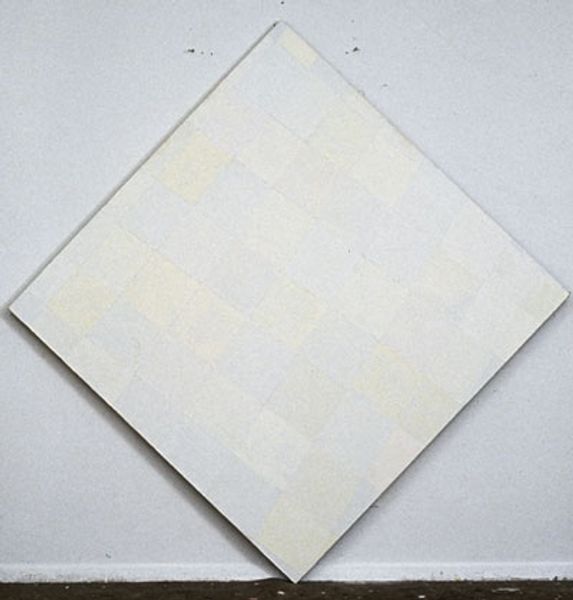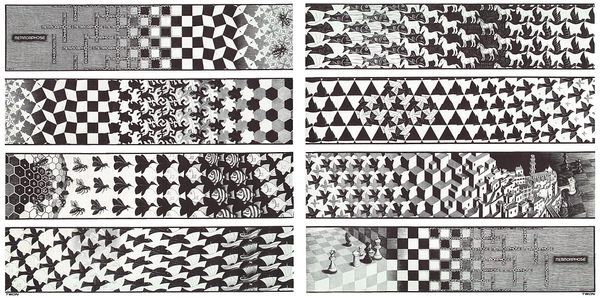
Dimensions: object: 9 x 1840 x 1840 mm, 250 kg
Copyright: © Carl Andre/VAGA, New York and DACS, London 2014 | CC-BY-NC-ND 4.0 DEED, Photo: Tate
Editor: This is Carl Andre's "Steel Zinc Plain," consisting of steel and zinc tiles arranged in a grid. There's something very austere and almost confrontational about its simplicity. What do you make of it? Curator: Andre’s work challenges traditional notions of sculpture and its relationship to space. It's not about creating a representational form, but about engaging with the environment, both physical and socio-political. How do you think its location within a museum affects the piece's meaning? Editor: That’s a really interesting question. Placing it here elevates its status, but also perhaps contains its challenge. I hadn’t considered that. Curator: Precisely. Its inherent industrial materiality also critiques the market by directly exhibiting commercial products as art. So, it's also challenging our assumptions about value. Editor: So, it's not just about what it is, but also where it is and how we're meant to perceive it in that context. I'll definitely be thinking about that for a while. Curator: Indeed! By considering those elements, we move beyond the immediate aesthetics into a much broader conversation about art's role in society.
Comments
Join the conversation
Join millions of artists and users on Artera today and experience the ultimate creative platform.
tate 6 months ago
⋮
As the title suggests, Steel Zinc Plain represents a territory or a space as much as an object. By placing it on the floor rather than on a plinth and allowing it to be walked across, Andre alters the viewer’s relationship to the work of art. Simple, geometric forms made from industrial materials are characteristic features of Andre’s sculptures. Gallery label, February 2011
